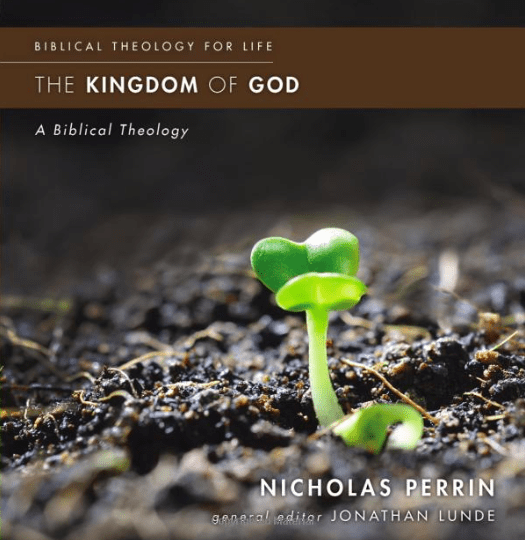 A couple of weeks ago I posted from Christian Letters to a Post-Christian World, a selection of essays by Dorothy Sayers, unfortunately out of print now (but also available under the title The Whimsical Christian: 18 Essays I believe). This is a volume well worth coming back to – and I will. Sayers deserves a far broader readership than she receives. She was much more than just a writer of detective stories. Her insights (not to mention her incredible power with the pen) still speak today, in fact they speak to our increasingly post-Christian world in a manner we would do well to heed.
A couple of weeks ago I posted from Christian Letters to a Post-Christian World, a selection of essays by Dorothy Sayers, unfortunately out of print now (but also available under the title The Whimsical Christian: 18 Essays I believe). This is a volume well worth coming back to – and I will. Sayers deserves a far broader readership than she receives. She was much more than just a writer of detective stories. Her insights (not to mention her incredible power with the pen) still speak today, in fact they speak to our increasingly post-Christian world in a manner we would do well to heed.
One of the themes that ricochets around throughout Sayers work is a respect for the profound depth of Christian doctrine and belief. The Christian faith is not a shallow superstition we have outgrown but a drama whose depth we barely fathom. She puts it like this to start an essay on The Greatest Drama Ever Staged:
Official Christianity, of late years, has been having what is known as “a bad press.” We are constantly assured that the churches are empty because preachers insist too much upon doctrine – “dull dogma,” as people call it. The fact is precisely the opposite. It is the neglect of dogma that makes for dullness. The Christian faith is the most exciting drama that ever staggered the imagination of man – and the dogma is the drama.
That drama is summarized quite clearly in the creeds of the Church, and if we think it dull it is because we either have never really read those amazing documents, or have recited them so often and so mechanically as to have lost all sense of their meaning. The whole pivots upon a single character, and the whole action is the answer to a single central problem: What think ye of Christ? (p. 13)
The incarnation, life, death, and resurrection of Jesus Christ is, according to Sayers, the greatest drama ever staged. We’ve tamed it to a Christmas story of a baby, a good life, and … perhaps … a hope for the future.
So that is the outline of the official story – the tale of the time when God was the underdog and got beaten, when He submitted to the conditions He had laid down and became a man like the men He had made, the men He had made broke him and killed Him. This is the dogma we find so dull – this terrifying drama of which God is the victim and hero.
If this is dull, then what in Heaven’s name is worthy to be called exciting? The people who hanged Christ never, to do them justice, accused Him of being a bore – on the contrary; they thought Him too dynamic to be safe. It has been left for later generations to muffle up that shattering personality and surround him with an atmosphere of tedium. We have efficiently pared the claws of the Lion of Judah, certified Him “meek and mild,” and recommended him as a fitting household pet for pale curates and pious old ladies. To those who knew Him, however, He in no way suggested a milk-and-water person; they objected to Him as a dangerous firebrand. … But He has a daily beauty in His life that made us ugly,” and officialdom felt that the established order of things would be more secure without Him. So they did away with God in the name of peace and quietness. (15-16)
The cornerstone the culmination of the drama is the resurrection. And the key piece to the importance of resurrection is found in the incarnation. The life, death, and even resurrection, of a good man, would mean little. If he was merely God then immortality is no big deal, and what happened to God certainly means little to mortal man. The drama is powerful because of incarnation, God became man, and resurrection, the victory over death. The good news of the Gospel is in incarnation and resurrection. And this is what our post-Christian world dismisses as ancient superstition.
Perhaps the drama is played out now, and Jesus is safely dead and buried. Perhaps. It is ironical and entertaining to consider that at least once in the world’s history those words might have been spoken with complete conviction, and that was upon the eve of the Resurrection. (p. 17)
The Dogma is the Drama. Sayers returns to some of the themes developed in the essay summarized above in a later short essay, The Dogma is the Drama. The church of her day (and perhaps ours as well) she thought had succeeded so well in taming the Gospel that the idea that the orthodox Christian creed could be exciting or profound was, quite simply, unbelievable. Here we pick up Sayers’ narrative:
That this is really the case was made plain to me by the questions asked me, mostly by young men, about my Canterbury play, The Zeal of Thy House. The action of the play involves a dramatic presentation of a few fundamental Christian dogmas – in particular, the application to human affairs of the doctrine of the Incarnation. … all these things were looked upon as astonishing and revolutionary novelties, imported into the Faith by the feverish imagination of a playwright. I protested in vain against this flattering tribute to my powers of invention, referring my inquirers to the Creeds, to the Gospels, and to the offices of the Church; I insisted that if my play was dramatic it was so, not in spite of the dogma but because of it – that, in short, the dogma was the drama. (p. 23-24)
After a witty and sharp parody of a hypothetical examination paper on the nature of Christian religion she concludes the essay:
Let us in Heaven’s name, drag out the Divine Drama from under the dreadful accumulation of slipshod thinking and trashy sentiment heaped upon it, and set it on an open stage to startle the world into some sort of vigorous reaction. … If all men are offended because of Christ, let them be offended; but where is the sense of their being offended by something that is not Christ and is nothing like Him? We do Him singularly little honour by watering down His personality til it could not offend a fly. Surely it is not the business of the Church to adapt Christ to men, but to adapt men to Christ.
It is the dogma that is the drama – not beautiful phrases, nor comforting sentiments, nor vague aspirations to lovingkindness and uplift, nor the promise of something nice after death – but the terrifying assertion that the same God who made the world, lived in the world and passed through the grave and gate of death. Show that to the heathen, and they may not believe it; but at least they may realize that here is something that a man might be glad to believe. (p. 26)
Horrors, this is what we get when we allow women to teach in the church. The issues raised in American evangelicalism today are somewhat different from those that confronted Sayers in the mid-twentieth century. Her insights, however, still hold true. The drama, and the value, of Christian faith is in the dogma; in the biblical story of Creation, Israel, Incarnation, and Resurrection. If we do not preach the drama we turn the faith into something suited only for pale curates and pious old ladies; or just as bad and more common today, moral lessons for everyday life learned just as well, or even better, from other sources. Why should the world care?
What do you think of the idea that the drama is the dogma?
Where can the church, especially the evangelical church, improve in living out the drama of Christian dogma?
If you wish to contact me directly you may do so at rjs4mail[at]att.net
If interested you can subscribe to a full text feed of my posts at Musings on Science and Theology.










